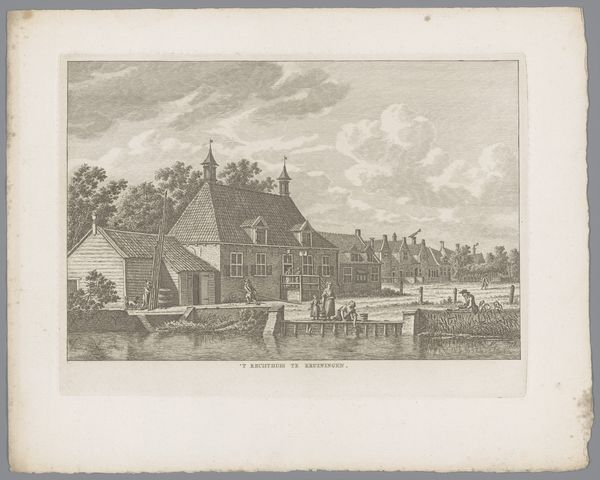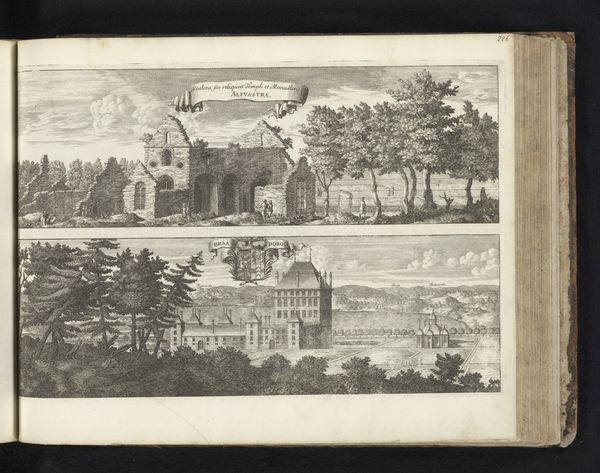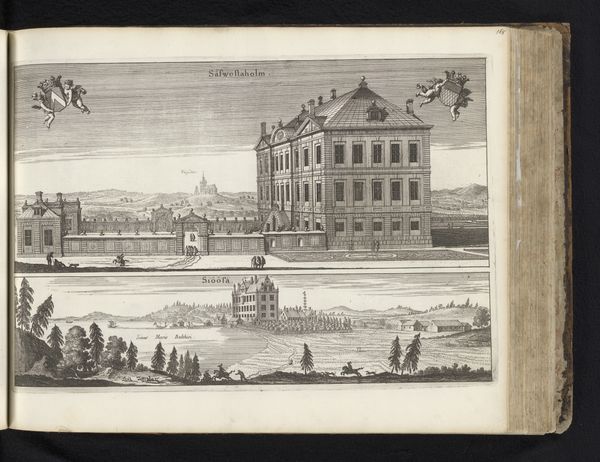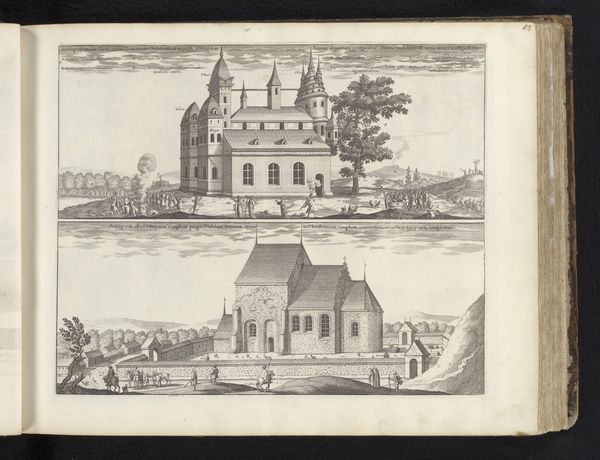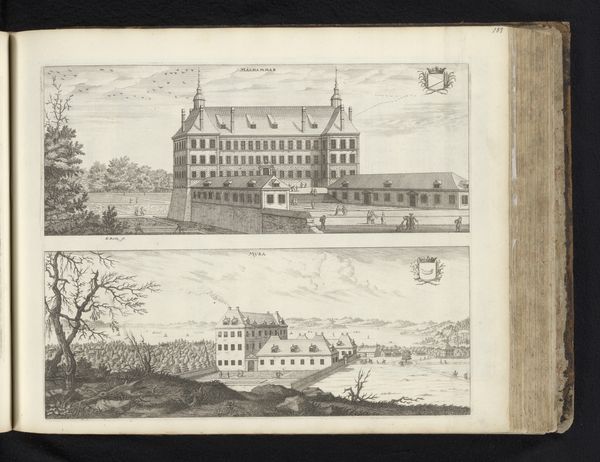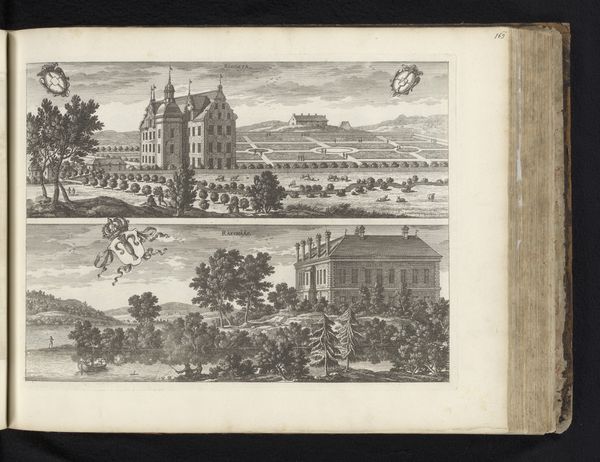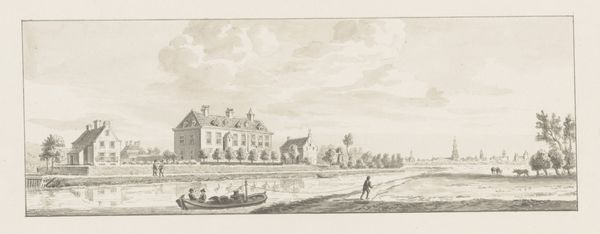
print, etching
#
baroque
# print
#
etching
#
landscape
#
cityscape
#
history-painting
Dimensions: height 278 mm, width 343 mm
Copyright: Rijks Museum: Open Domain
Curator: This etching by Adam Perelle, created sometime between 1670 and 1674, offers us a paired view of \u00c5ker\u00f6 Castle and \u00c5d\u00f6 manor house. The print is currently held at the Rijksmuseum. My first impression is a bit sterile, very formal. The architecture and setting both seem to impose an almost...antiseptic order. Editor: I see something different entirely. It evokes a strong sense of authority and aspiration. Both buildings, the castle particularly, stand as potent symbols of power. Look at how deliberately Perelle captures the coat of arms above \u00c5ker\u00f6, solidifying that image of nobility and lineage. Curator: True, and consider how Perelle achieved that effect. He likely worked from preparatory sketches, using an etching needle to painstakingly recreate architectural details and staffage figures on a copper plate. The materials themselves, the acid used to bite the lines into the metal, reflect the meticulous craft inherent in reproducing such imagery for a wider, aspiring audience. Editor: And these landscapes are not simply objective depictions, either. The placement of figures actively participating in some kind of exchange reinforces these manors' importance as economic hubs and social spaces, which lends additional narrative weight to these places. People are integral to the symbolism. Curator: Absolutely, these kinds of images served very distinct purposes. Disseminating this visual information meant Perelle and his contemporaries had to carefully manage time, expense, labor and artistic execution to produce reproducible prints for circulation and collection. The very notion of 'history painting' as one of the tag refers to the physical circulation and function as ‘historical evidence.’ Editor: Yes. Both scenes project order and control, crucial to conveying status. The buildings represent stability, family, and societal hierarchy. That the manors remain and have histories solidifies what these buildings communicate on a deeper level. The architecture is merely the surface that symbolizes larger ideological underpinnings, from economy, lineage, and society. Curator: Considering all of that really opens this etching up to broader conversations, doesn’t it? The print showcases this intersection between art, social history, and the material culture of seventeenth-century Europe. Editor: It certainly does; now it offers so much more than an elegant view. The architectural portraits of these estates echo deep symbolic, emotional and intellectual investments in power and authority.
Comments
No comments
Be the first to comment and join the conversation on the ultimate creative platform.
